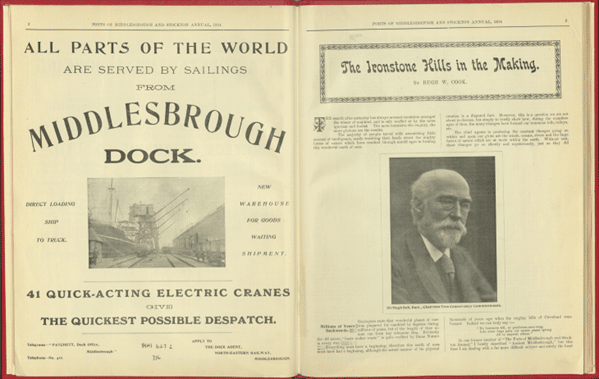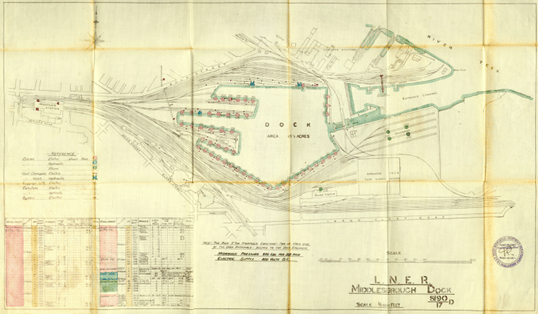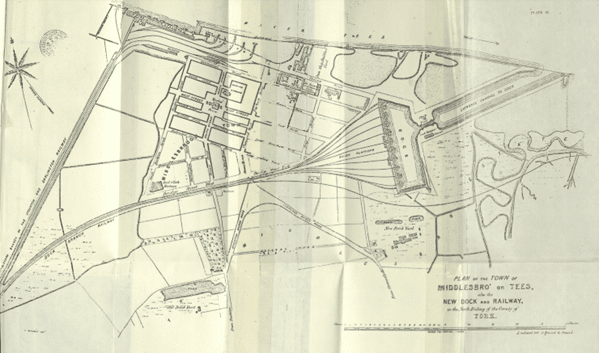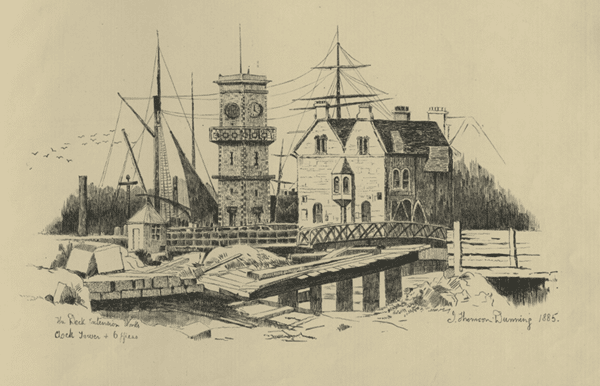As the coal export industry thrived it became apparent that the early staiths constructed at Port of Middlesbrough were insufficient to sustain the expanding enterprise and it was decided a dock would be better suited to the town’s needs.

Did you know?
Middlesbrough Dock Clock Tower has four sides but only three clock-faces. It is said that employers to the north of the clock – where the face is blank – did not want their workers ‘clockwatching’.
Lifting rail wagons using steam power was found to be expensive in maintenance and inadequate to the increasing trade. In 1838 the Middlesbrough Owners – the group of businessmen responsible for the development of the town – proposed constructing a dock on their estate to the east of the coal staiths. The new dock was laid out by the eminent engineer (later Sir) William Cubbitt and opened on 12 May 1842 with greater capacity than the coal staiths.
By means of a branch railway, terminating in diverging lines at ten new staiths or drops, 15 feet above the water surface, the expense of raising the wagons by steam power was saved, as well as the damage and risk avoided. Vessels could also now be loaded afloat at all times of the tide (Coal Drops Middlesbrough P250).
Ownership of Middlesbrough Dock transferred to the Stockton & Darlington Railway Company in 1849. Middlesbrough Dock is not operational today but can still be seen on the area of the river immediately adjacent to Middlesbrough Football Club’s Riverside Stadium.
The development of the dock and improvements to the river facilities would come to play a central role in the rapid expansion of Middlesbrough in the decades following the discovery of significant ironstone deposits in the Cleveland Hills that would underpin the development of major iron (and later, steel) manufacturing along the Tees.


Did you know?
The new dock required the Middlesbrough branch line to divert south eastwards. This attracted considerably more development to the southeast of the planned new town. The new railway formed a barrier between the 1830 town and the post 1842 town. From that time onwards, the railway was referred to as the ‘border’.

Did you know?
The new town of Middlesbrough played host to its first Royal visit in October 1838 when the Duke of Sussex was a guest of the Earl of Zetland. On arriving at Middlesbrough he was greeted by a Royal salute, fired by a cannon on the river bank and the Duke later declared “I am delighted to witness the rising prosperity of your little town”.